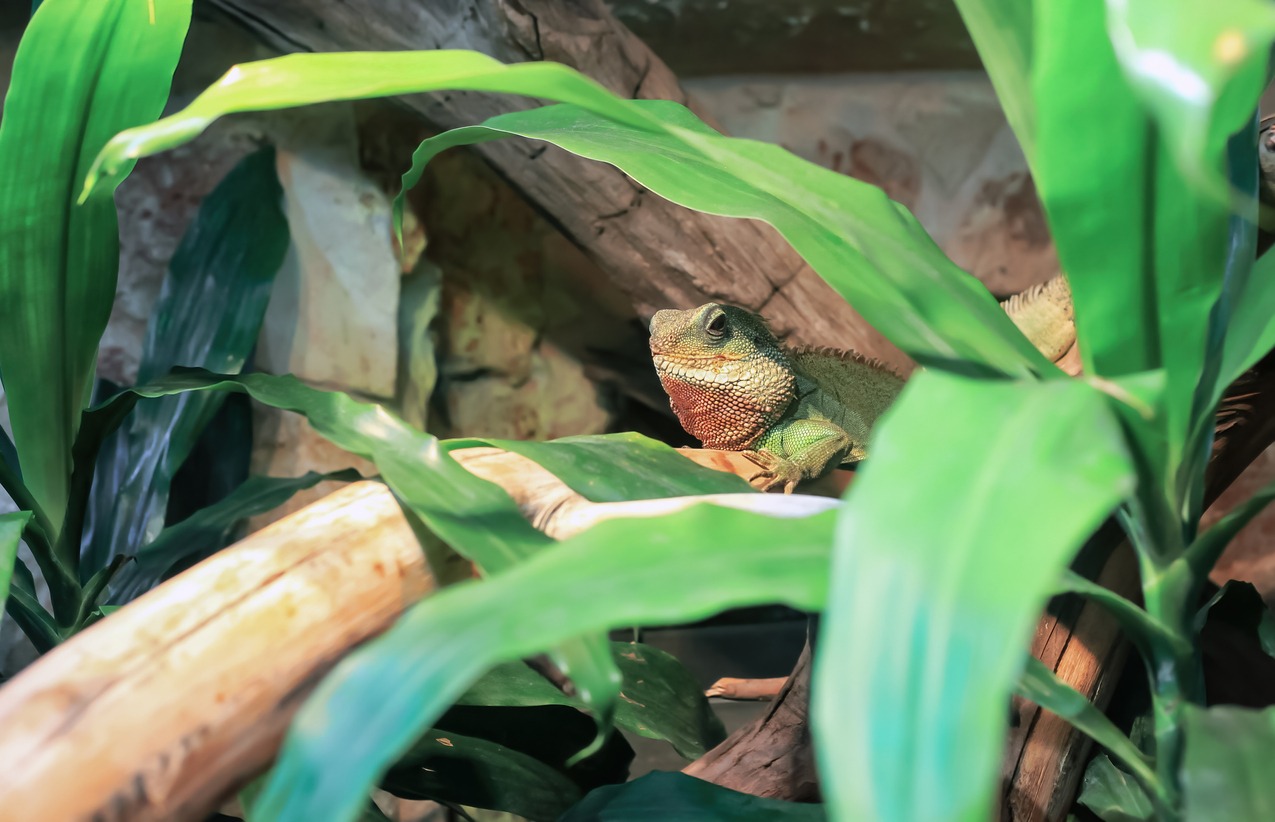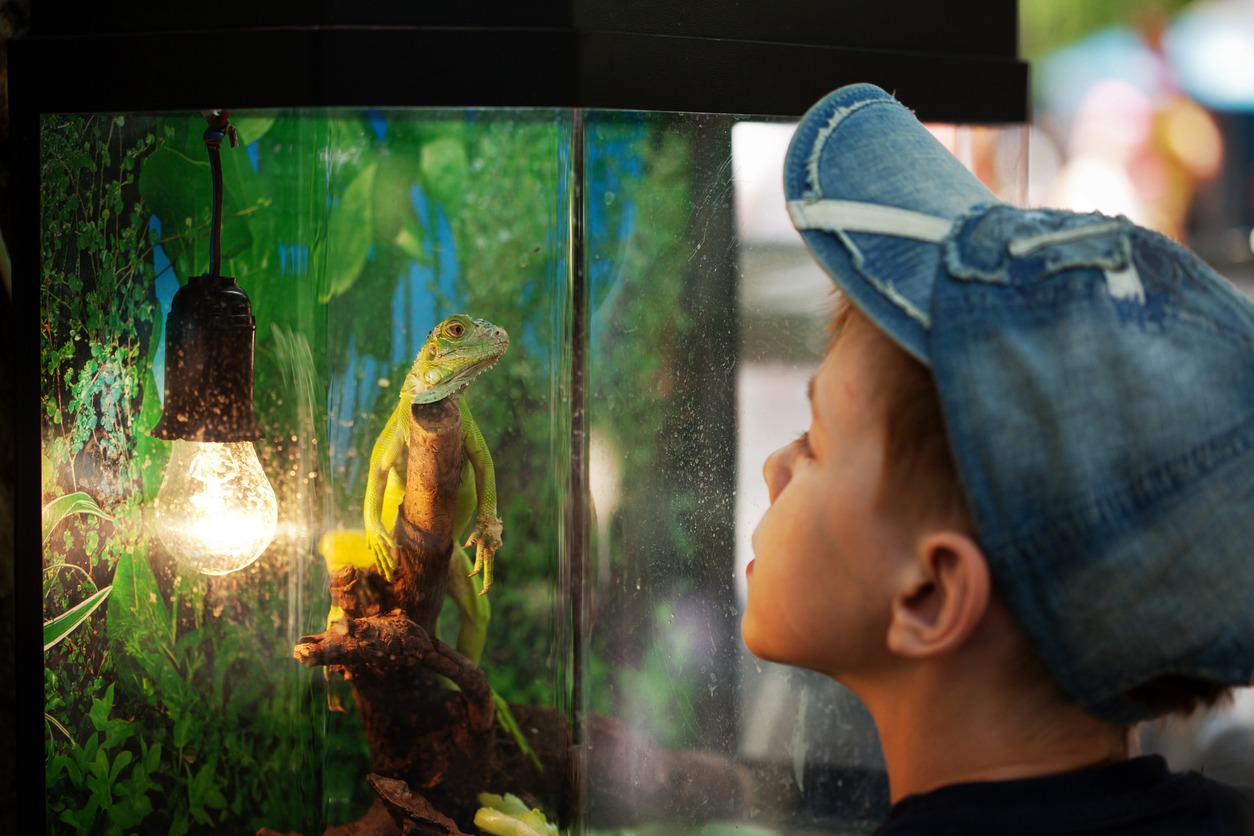Creating a suitable habitat for your pet lizard is crucial for its health and well-being. Whether you have a bearded dragon, leopard gecko, or any other type of lizard, providing a proper setup is essential for their physical and mental development.
Whether you are a first-time lizard owner or looking to upgrade your current setup, this guide will provide you with the necessary knowledge and tips to ensure your lizard’s habitat is conducive to their natural needs.
Choosing the right enclosure for your lizard
When it comes to setting up a habitat for your lizard, one of the most important decisions you’ll make is choosing the right enclosure. The enclosure you select will not only provide a safe and comfortable space for your lizard to live in but also impact their overall health and well-being.
Lizards come in all shapes and sizes, and different species have varying space requirements and environmental needs. It’s crucial to choose an enclosure that is spacious enough for your lizard to roam and climb comfortably. Research the specific needs of your lizard species and opt for an enclosure that meets their requirements.
Heating and lighting
When it comes to heating your lizard’s enclosure, there are several options to consider. Heat lamps, heat mats, and ceramic heaters are commonly used, each with their own advantages and disadvantages.
Heat lamps provide a concentrated source of heat and can be easily adjusted to create a temperature gradient within the enclosure. Heat mats, on the other hand, provide a gentle and consistent heat from below, mimicking the warmth of the sun. Ceramic heaters are a great option for nocturnal lizards, as they emit heat without producing light.
UVB lighting is essential for the health and wellbeing of lizards. It helps them metabolize calcium, which is crucial for strong bones and preventing metabolic bone disease. When selecting a UVB bulb, it is important to choose one that emits the proper intensity and wavelength. The bulb should also be placed in a way that ensures maximum exposure for your lizard. Consider using a combination of UVB lighting and natural sunlight, if possible, to provide the most beneficial light spectrum for your lizard.
Adding the proper substrate
Choosing the right substrate is important for both comfort and hygiene. Reptile carpet, coconut fiber, and sand are popular options, but it is important to choose a substrate that is appropriate for your specific lizard species.
Sand, for example, is a popular choice for desert-dwelling lizards, as it allows them to burrow and create tunnels, replicating their natural behaviors. On the other hand, forest-dwelling species may require a substrate that retains moisture, such as coconut fiber or moss, to imitate the damp forest floor.
Provide hiding spots
One of the key aspects of creating a natural and enriching environment for your lizard is providing proper hiding spots. These hiding spots should be strategically placed throughout the enclosure and should mimic the natural hiding places that lizards would seek out in the wild. This can be achieved by incorporating rocks, logs, or artificial caves into the enclosure. These hiding spots not only provide a safe space for your lizard but also add visual interest and create a more natural-looking habitat.
In addition to hiding spots, decorations such as plants and branches can be added to the enclosure to create a more stimulating environment for your lizard. These decorations can provide opportunities for climbing, exploring, and even basking, depending on the type of lizard you have. Just ensure that any decorations you add are safe for your lizard and do not pose a risk of injury.
Maintain humidity levels
Humidity levels are crucial for the health and wellbeing of lizards, as different species have varying requirements. Maintaining appropriate humidity levels can be achieved through the use of misting systems, humidifiers, and water bowls. However, it is important to monitor humidity levels and avoid excessively high humidity, as this can lead to mold growth and respiratory issues. Regularly checking humidity levels and ensuring proper ventilation is essential.
To ensure the ideal humidity levels, you can incorporate various methods into your lizard’s habitat setup. One effective way is to provide a misting system or a well-placed water feature, allowing your lizard to hydrate and increase humidity levels naturally. Additionally, using a hygrometer will help you monitor and adjust the humidity accordingly, ensuring your lizard’s comfort.
Different lizard species have specific humidity requirements, so it’s crucial to tailor your habitat setup accordingly. For example, tropical lizards, such as chameleons, might require higher humidity levels, while arid-dwelling species, like bearded dragons, prefer lower humidity.
Setting up feeding and water stations
Setting up a proper feeding and watering station for your lizard is crucial for their overall health and well-being. Not only does it provide a designated area for feeding, but it also ensures that your lizard is getting the right nutrition and staying hydrated.
Having a designated feeding area for your lizard is essential for several reasons. It helps establish a routine for your pet, making it easier for them to anticipate meal times. It also prevents food from being scattered throughout the enclosure, reducing the risk of contamination and keeping the area clean. Having a feeding station also allows you to monitor your lizard’s food intake and ensure they are receiving a balanced diet.
When it comes to choosing the right type of food and water dishes for your lizard, there are a few factors to consider. The size of the dishes should be appropriate for your lizard’s size and should be easily accessible for them. It’s important to choose dishes that are easy to clean and made from safe materials. Ceramic or stainless-steel dishes are often recommended as they are durable and can be easily sanitized.
Creating a comfortable and safe feeding environment is crucial for your lizard’s well-being. Ensure that the feeding station is located in a quiet area away from excessive noise and disturbances. Providing a flat surface for your lizard to eat on, such as a rock or a branch, can mimic their natural feeding habits and make them feel more at ease. It’s also important to consider the temperature and lighting in the feeding area, as some lizards require specific conditions for optimal digestion.
Maintaining cleanliness and hygiene in your lizard’s feeding and watering station is vital for their health. Regularly clean and sanitize the dishes to prevent the growth of bacteria or parasites. Remove any uneaten food promptly to avoid attracting pests or causing contamination. It’s also a good idea to use filtered or bottled water for your lizard’s hydration needs, as tap water may contain harmful chemicals or impurities.
Conclusion
Creating a suitable habitat for your pet lizard is crucial for its overall health and well-being. By following the necessary steps and providing the right environment, you can ensure that your lizard has a comfortable and safe home. Remember to regularly monitor and maintain the setup to keep it clean and suitable for your pet’s specific needs. With proper habitat setup, your lizard can thrive for the years to come.



